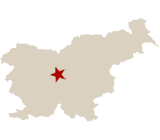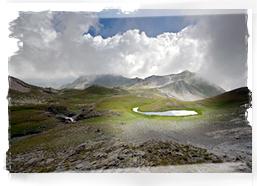An Introduction to Slovenia
The Alps, the Mediterranean and the Pannonian Plain meet in the territory of the modern Republic of Slovenia, a majority of which is covered by mountains and forests. See full country profile.Latest Research News from Europe (Other)
18 current Other European jobs including:
Customer Support Executive - Become the Client Success Hero at Ipsos.Digital, Bucharest Office or Remote (Romania), EUR Competitive salary & benefits - (posted Jul 22 2025)
PHP Developer - Engineer Revolutionary Features for Ipsos.Digital's Research Platform, Bucharest Office or Remote (Romania), Competitive salary & benefits - (posted Jul 16 2025)
Senior C#/.NET Software Engineer (Backend), Remote (Romania), Competitive salary and benefits - (posted Jul 15 2025)

GOVERNMENT: Unitary parliamentary constitutional republic
AREA: 20,273 sq km
POPULATION: 2,050,189 (July 2011 est.)
MAJOR LANGUAGE: Official Language: Slovene

Some business and general info
The Market Research Industry
Trade and Industry in Slovenia
Rather easier to trace and verify: the breed of horses developed by the Habsburgs in the 16th century which formed and form the famous Spanish Riding School of Vienna is named not for a place in Spain or Austria, but after the location of a stud farm in Slovenia. Lipica (Lipizza in Italian) is the town and the horses are Lipizzaner.
Go to next country
The Alps, the Mediterranean and the Pannonian Plain meet in the territory of the modern Republic of Slovenia, a majority of which is covered by mountains and forests.
The area was part of the Roman, Frankish and Holy Roman territories before rule by the Habsburgs from the 14th century. During the rule of the last, the province was established as an industrial centre, and attained high levels of literacy - as much as 90 percent before WWI. After the War and the Austro-Hungarian break-up it became part of the new Kingdom of Serbs, Croats and Slovenes, subsequently (from 1929) the Kingdom of Yugoslavia - for which it was again the centre of industrial production. Part of Tito's communist Yugoslavia after WWII, the country broke away in 1989 and held democratic elections in 1990, but fought for and won true independence from Yugoslavia in the Ten Day War the following summer.The first former Communist country to join the Eurozone, in 2007, it also joined the OECD in 2010. A secular and ethnically diverse country with an export-oriented economy, it is now the richest per capita of the Slavic states.
GDP: $57.8 bn (2011 est.); $28,641 per capita
Religions Islam 45%, orthodox Serb 36%, Catholic 15%, Others 4%.
Currency: Euro
Telephone Code: + 386
Slovenia has a developed economy with many pluses - including a well-educated workforce and well-developed infrastructure. It enjoyed one of the most stable political and economic transitions in the former eastern bloc and is currently per capita the richest of Slavic states. Its service sector is dominant, employing almost two thirds of the workforce. However, low foreign direct investment, high taxes, regional variations in wealth and lagging competitiveness / productivity are still seen as problems, and the country is strongly dependent on foreign trade, especially with Germany, Austria, Italy and France.
Privatization has lagged since 2002, and the economy has one of highest levels of state control in the EU, although structural reforms are in progress. In 2009 the economy contracted by 8% and unemployment rose - the latter has since continued although growth resumed in 2010.
Exports were $29.0bn in 2011 with manufactured goods, machinery and transport equipment, chemicals and food key items. In 2009, Germany took 19.2%, Italy 12.5%, Austria 7.4%, France 6.8% and Croatia 6.4%. Imports of 31.1bn include machinery and transport equipment, manufactured goods, chemicals, fuels and lubricants and food, with Germany (16.2% in 2009), Italy (15.5%) and Austria (10.6%) supplying the most.
Email me:
laurence@mrweb.com

